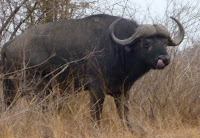About 10 days ago I finally installed sap flow (xylem flux in trees) in the exclosures. It was a extremely busy week which was followed by one week of wetland fieldwork in KwaZulu-Natal province not related to my masters thesis. Being so occupied with work I wasn't able to write anything but I will catch up now.
I just downloaded my first data set from the sapflow and it looks very promising! Over the ten days that I have been away all probes were successfully logging and the car battery which is fed by a solar panel just survived.
Roughly the steps of setting up a sap flow probe on a tree
The upper 'needle' has a heating coil wich heats the conducting sapwood on a very low rate (about 0.3 watts). Both needles measure the temperature difference between them. Accoding to the rate of sap flux the heat will be carried away from the heating coil faster or slower. When there is no flow the heat accumulates and the temperature difference will be at maximum. Usually the sap flux is in order of a few centimetres per hour maximum.
The casings around the needles are filled with insulation material to prevent possible biassed readings from external temperature influences. Glueing them to the stems with silicon is a good way to keep all sorts of insects out.
For just 13 probes I had to lay out 1.5 km of single pin cable. Tomorrow I'll install the remaining 3 sap flow probes.
All the heating takes up nearly 10 watts which is provided by a car battery and a solar panel
Today I downloaded the data for the first time.. looks very good so far.
An is Acacia nigrescens
Ag is Acacia granitulata
Ca is Combretum apiculatum
D is Dichrostachys cinerea
I'll write more soon about the wetland work and Tenele's home in Swaziland where I've been too. Hope you are all well! Warm greetings from hot Sk;)





























































